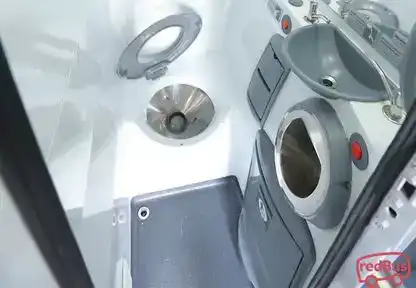Buy Cusco to Nazca Bus Tickets Online - Unlock Extra Savings with redDeals on redBus
Reserve a bus from Cusco to Nazca with redBus, Peru, and grab exclusive redDeals. Choose from 157 deals on 37 bus operators and avail yourself of discounts up to 25% on your bus travel!
Cusco to Nazca Bus
From Cusco to Nazca there are 529 mi (851 km) and you can do the travel in about 15 hours on the highway. The transportation companies Oltursa, Excluciva, Tepsa and Civa cover the route Cusco - Nazca, by their long-distance buses. The bus tickets cost from s/. 100 to s/. 180 (the prices vary depending on the service, the hour and the company). The buses leave from 1:30 p.m. to 6:00 p.m. from the terminals close to Vía Evitamiento in the central area of Cusco. In Nazca, the buses will arrive to the terminals of Av. Lima, next to the main roads of the city. The climate in Nazca is dry, with sunny days and warm temperatures most of the year.
Why book a Cusco to Nazca bus with redBus?
You can also time-to-time redBus offers while booking your bus tickets online from Cusco to Nazca. Follow a simple, fast and secure bus booking procedure. This helps save time and also helps to create a joyful travel experience!
About Cusco
Cusco or Cuzco (both graphical symbols are acceptable according to the RAE, Real Academy of the Spanish language) is the main destination that you can get to know on your trips through Peru. Learn more about it in this section.The legend tells that Cusco was founded by 2 ancestral patriarchs, who, due to the design of the deity Sun, emerged from the Titicaca lake with the mission of putting in order the Andean men’s life. They would be the beginning of the vast Incan Empire, which as time goes by would reach its maximum glory consolidating as a powerful State. In 1911 the American explorer Hiram Bingham would refind the incan citadel to the world’s eyes with the discovery of Machu Picchu. From that day the growth of Cusco has been exponential, turning to be one of the most visited worldwide tourist destinations and favourite place for national and foreign tourists to “discover” the beauty of the Machu Picchu citadel on its travel to Cusco.
Cusco, known as the Historic Capital of Peru, is one of the most visited cities in South America. It is the gateway to Machu Picchu and offers a rich mix of Inca and colonial heritage, stunning landscapes, and vibrant traditions.
Weather in Cusco
Cusco has a temperate climate with two distinct seasons:
- Dry season (May - October): Sunny days and cold nights, with temperatures between 5°C and 20°C (41°F - 68°F).
- Rainy season (November - April): Frequent showers, but lush green landscapes.
Hotels in Cusco
Hotel Monasterio
- Location: Plazoleta Nazarenas 337.
- Price: From S/ 600 per night.
- Description: A luxury hotel housed in a former monastery, offering a unique blend of history and comfort.
Tierra Viva Cusco Centro
- Location: Calle Cruz Verde 390.
- Price: From S/ 200 per night.
- Description: A comfortable mid-range hotel with modern amenities and a colonial-style atmosphere.
Restaurants and Bars in Cusco
Chicha por Gastón Acurio
- Location: Calle Plaza Regocijo 261.
- Average Price: Between S/ 40 and S/ 80.
- Description: One of Cusco’s top restaurants, serving elevated Peruvian cuisine.
Limbus Restobar
- Location: Calle Pasñapakana 133.
- Average Price: Between S/ 30 and S/ 70.
- Description: A great spot for drinks with an incredible panoramic view of Cusco.
Gastronomy of Cusco
- Cuy al Horno: Traditional baked guinea pig.
- Chiriuchu: A festive dish with roasted guinea pig, chicken, and sausage.
- Olluquito con Charqui: A stir-fry of Andean olluco potatoes with dried alpaca meat.
Tourist Attractions in Cusco
- Plaza de Armas: The heart of Cusco, surrounded by colonial architecture.
- Sacsayhuamán: A massive Inca fortress with impressive stonework.
- Qorikancha: The Temple of the Sun, an important Inca religious site.
Important Dates in Cusco
- Inti Raymi (June 24): The Festival of the Sun, Cusco’s most important celebration.
- Señor de los Temblores (Holy Monday): A major religious event.
Things to Buy in Cusco
- Alpaca Wool Clothing: High-quality sweaters, scarves, and ponchos.
- Handmade Jewelry: Silver and Andean-inspired designs.
- Coca and Muña Tea: Traditional herbal teas from the Andes.
How to Get from Juliaca to Cusco by Bus
The distance from Juliaca to Cusco is approximately 342 km (213 miles), and the journey takes 6 to 8 hours, depending on the bus operator and road conditions.
Bus Operators for the Route
Departure and Arrival Terminals
- In Juliaca:
Most buses depart from the Juliaca Bus Terminal, located on Av. Circunvalación.
- In Cusco:
Buses arrive at the Terminal Terrestre Cusco, located on Av. Industrial.
About Nazca
At the current territory of Nazca flowered on the 1st century A.D. the Nazca culture. The researches and exploration of places and remains left by this culture indicate that this would be a direct continuation of the Paracas culture. Unlike the Paracas, who developed until perfection the textile art, the Nazca were the masters of pottery, standing out also for the hydraulic engineering present in the aqueduct construction (which is still used nowadays) and the impressive geoglyphs, which are known as the Nazca Lines. Between 700 and 900 A.D. took place the decadence of the Nazca culture, due to natural reasons. In 1901, the German archaeolologist Max Uhle discovered the potter legacy of the Nazca, which dates from 200, 500 and 700 D.C. Subsequently, in 1939, the American Paul Kosok would discover, without plnanning it, the Nazca Lines, while he was overflying the desert where they are.

